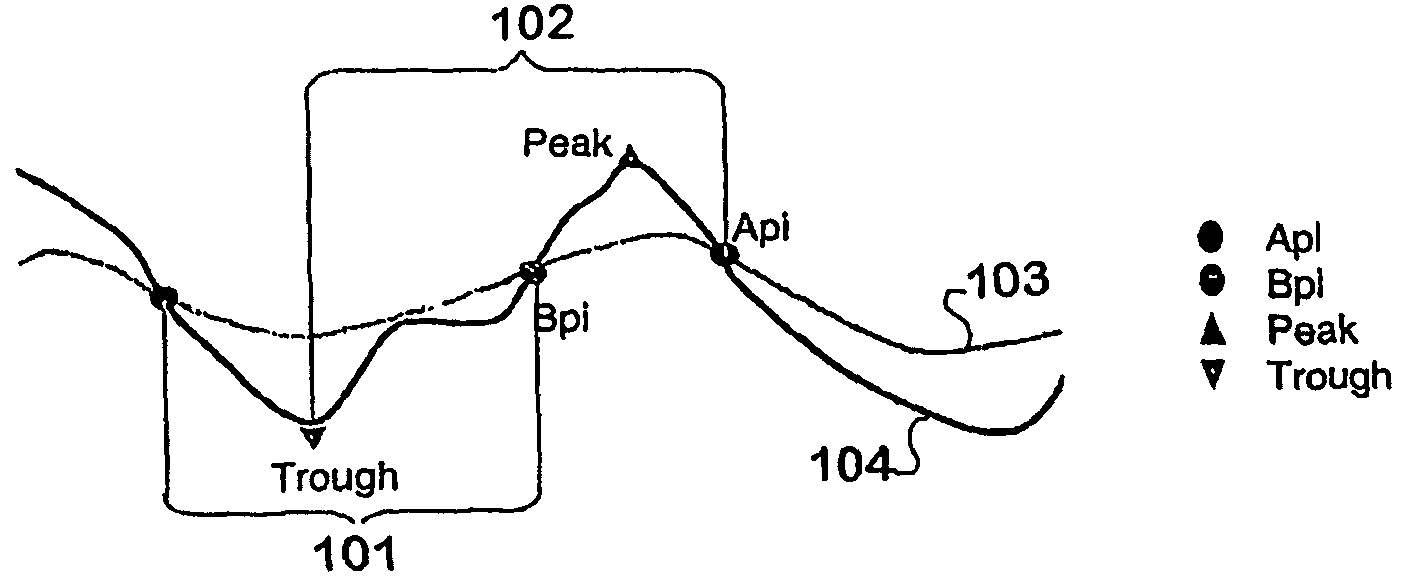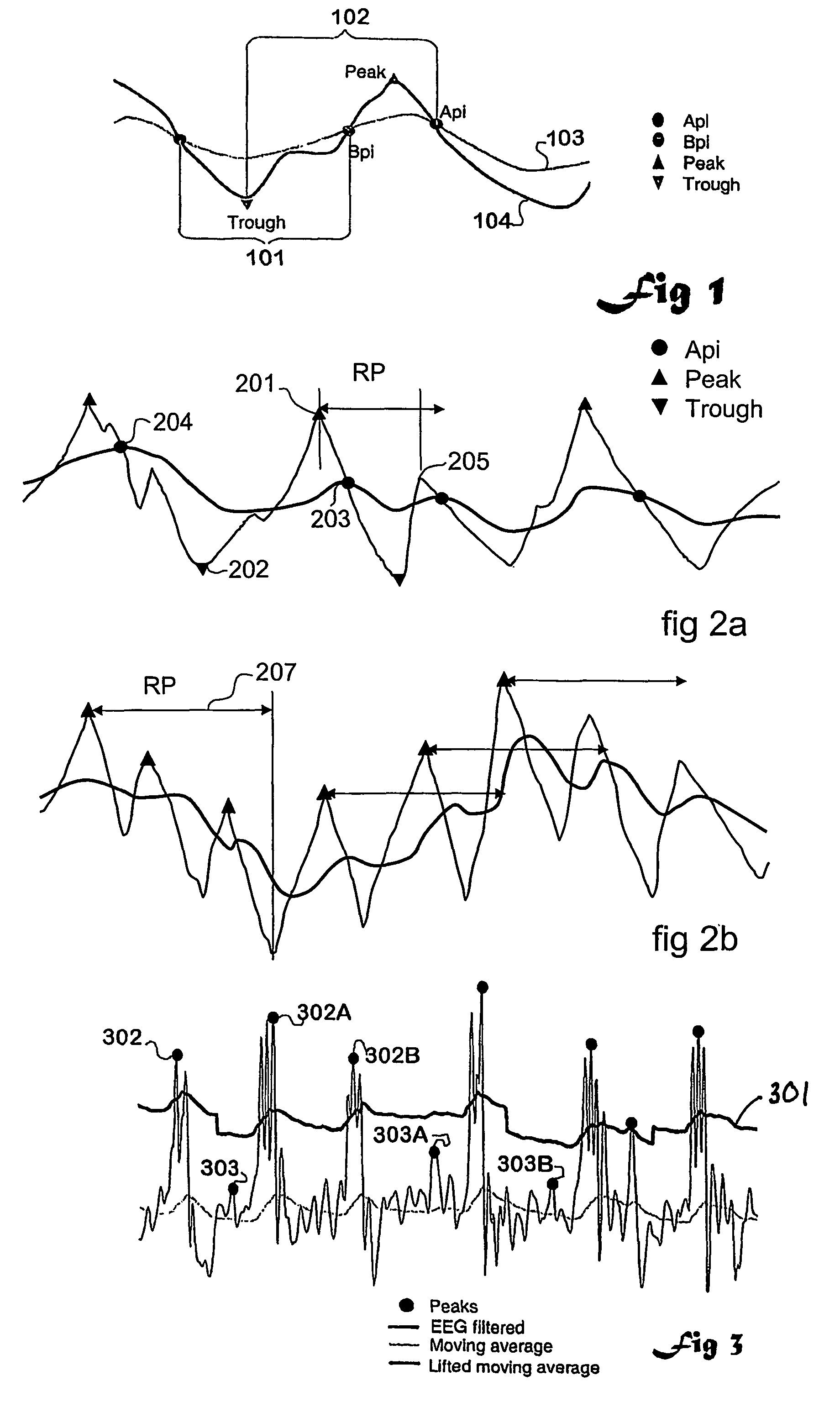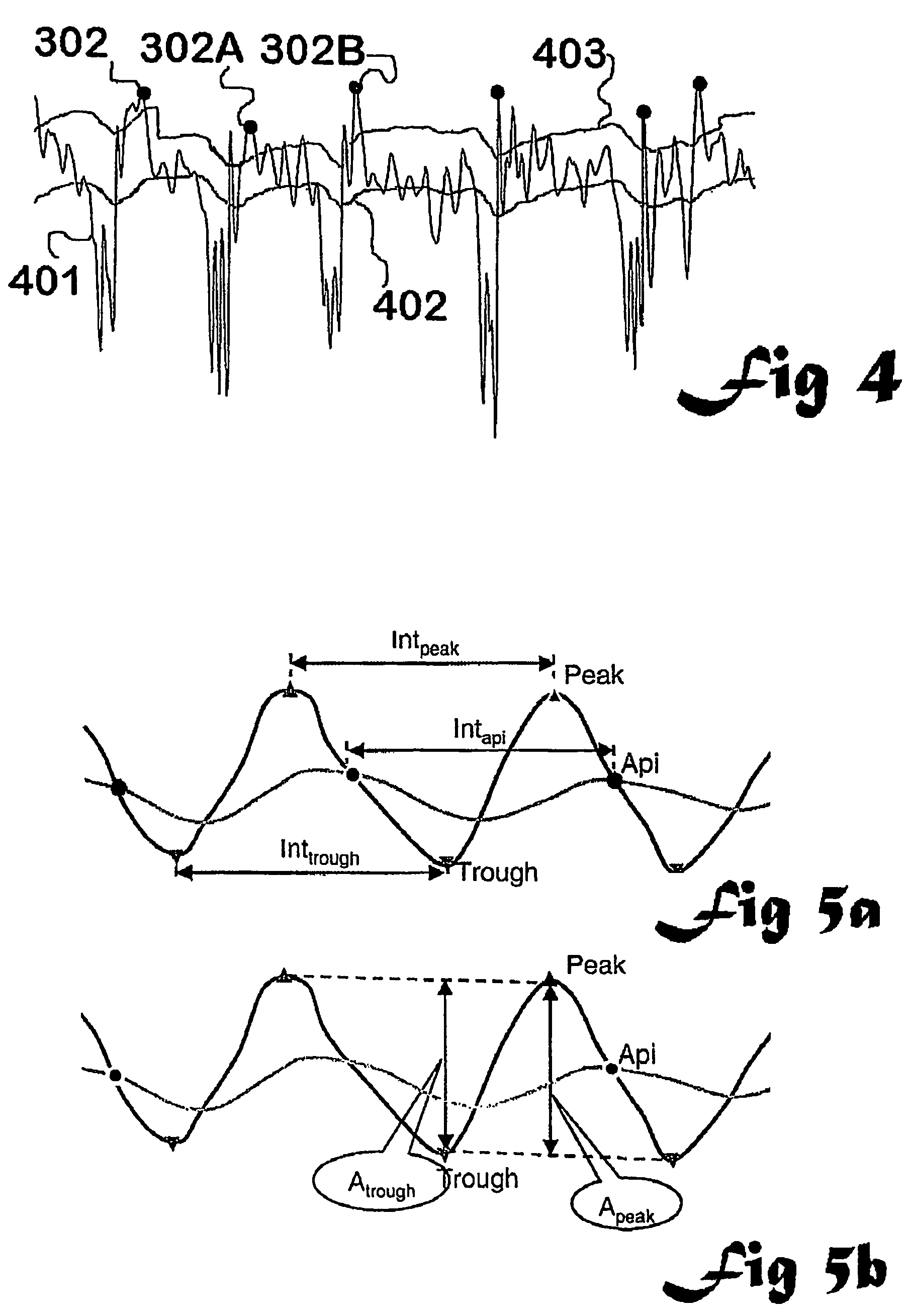EEG seizure analysis
a seizure and waveform technology, applied in the field of biophysical data collection and analysis, can solve the problems of inability to reliably observe or monitor seizures, large waveforms, and difficulty in recognition of waveforms, and patients are often paralysed or unconscious
- Summary
- Abstract
- Description
- Claims
- Application Information
AI Technical Summary
Benefits of technology
Problems solved by technology
Method used
Image
Examples
example 1
[0154]In the intended application, electroencephalogram (EEG) waveforms are analysed during a procedure of long-term collection from usually a single set of electrodes during monitoring of the brain of an endangered patient, for example a near term infant, or an older patient during or after surgery. The procedure could be applied to multiple electrode recordings.
[0155]The main objective of the invention is to automatically and accurately detect regularity in the EEG signal, which is assumed to represent seizure activity. In summary, there are three major steps as follows:
[0156]1) breaking of the EEG signal (one or many channels) into “waves” and measuring different characteristics of the individual waves belonging to three mutually exclusive and exhaustive categories: length, amplitude and shape.
[0157]2) carrying out parallel processing of calculations on the waves with different detection parameters in order to analyse waves with differing ranges of frequencies (and length).
[0158]...
example 2
[0203]The procedures described above have been implemented by integrating with existing software within the “Brain Rescue Monitor” (BRM) device made by the applicant. This device runs software to display and record parameters such as spectral edge, intensity (2-20 Hz) and amplitude of incoming or stored EEG waveforms. The BRM implementation is preferably used in combination with signal quality measures to ensure reliability. These signal quality measures may include some or all of the following:[0204]1) sufficiently low contact impedance ([0205]2) appropriate amplitude range,[0206]3) absence of high frequency / EMG interference,[0207]4) absence of electrode artefacts,[0208]5) absence of motion artefacts,[0209]6) absence of amplifier errors,[0210]7) absence of ECG artefact.
[0211]The implementation was successful. FIG. 12 illustrates the facility of recall provided by the entire instrument; the lowest panel 1203 of this screen capture image taken from the user's display panel shows a pe...
PUM
 Login to View More
Login to View More Abstract
Description
Claims
Application Information
 Login to View More
Login to View More - R&D
- Intellectual Property
- Life Sciences
- Materials
- Tech Scout
- Unparalleled Data Quality
- Higher Quality Content
- 60% Fewer Hallucinations
Browse by: Latest US Patents, China's latest patents, Technical Efficacy Thesaurus, Application Domain, Technology Topic, Popular Technical Reports.
© 2025 PatSnap. All rights reserved.Legal|Privacy policy|Modern Slavery Act Transparency Statement|Sitemap|About US| Contact US: help@patsnap.com



